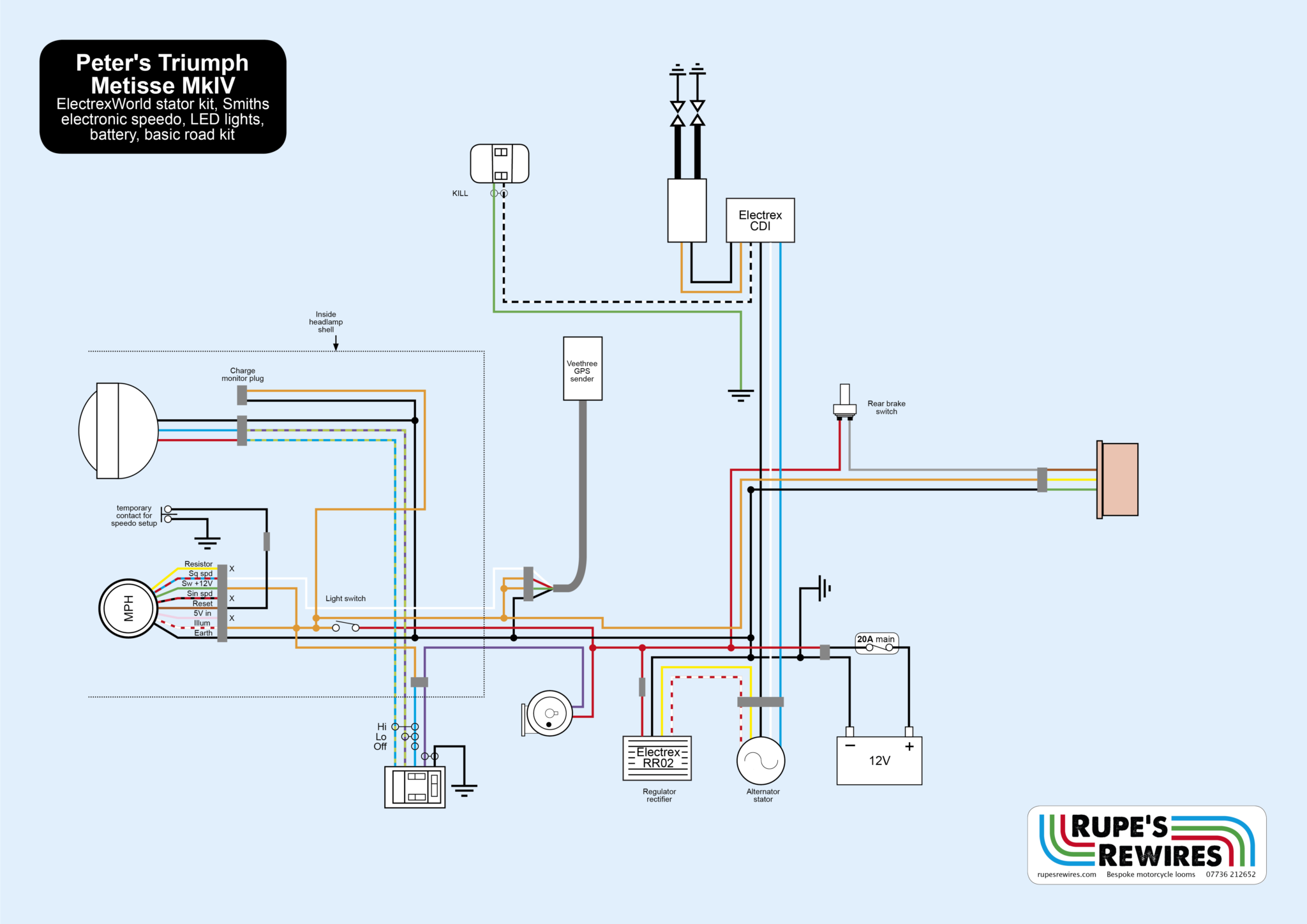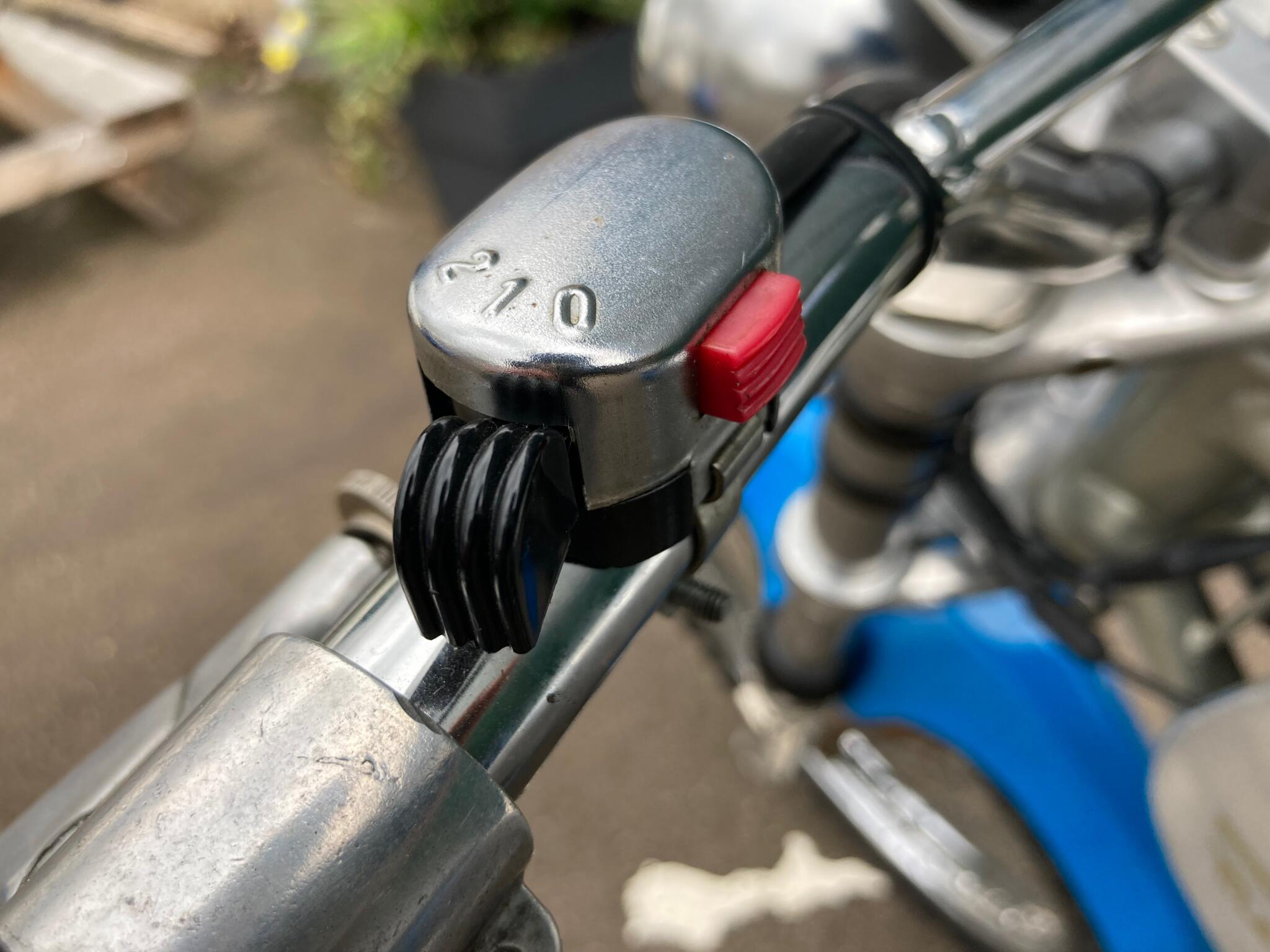
The bike came with an ElectrexWorld ignition/stator kit – hence the little black coil and the finned reg regulator rectifier which Peter had fitted to an ally plate
Peter’s Triumph T100 Metisse
This is the fourth roadgoing Metisse we’ve had in the RR shop, and they don’t get any easier. The electrics are simple enough. It’s all the other stuff: fitting a headlight, and indicators (if you want them); finding a home for the coil and ignition; and worst of all, sorting out the sidestand, rear brake switch and battery. That’s race frames for you. The bodywork is a fair old contraption too.
Peter had already been very helpful by making up a plate for the electrical gubbins just behind the headstock. A second plate mounted the fabulous electronic Smiths speedo, which is a perfect 1960s replica without the pain-in-the-arse speedo cable. Instead, it had a GPS speed sensor, which Peter had fitted in the airbox.
That just left the awkward bits: sidestand, rear brake switch and battery. I rang my old friend Simon Martin, who spent his career making road and racing frames for bikes. He can design and make absolutely anything out of metal. We briefly considered welding a sidestand bracket on, but decided it was sacrilege. Peter thought it was sacrilege too. Instead, there are two bolts for the left footrest, and a third one mounting an engine plate. Ideal for a bolt-on solution.
I should mention that Rickman made a side stand for the Metisse, but although beautifully made it was a dreadful thing that clamped onto the right hand side of the swing arm. Wrong place, wrong side, wrong ergonomics.
The smallest motorcycle battery you can get that isn’t a lithium is Motobatt’s MBT4BB. At 2.5Ah it should have enough oomph to power Peter’s LED lights. But the ElectrexWorld ignition and charging system is pretty minimal, so to be sure we decided on a charge indicator light. Electrex designed this particular system to run the head and tail light on AC, directly off a charging coil, but you can’t do that with LEDs. Also, running the lights that way results in a truly feeble glow. I should know; I have the same system on my Enfield Meteor.
Once everything was fitted and built the bike fired up. The charge indicator was happy, so perhaps the bike will run all day with its LED lights. It’s nice to think they are being operated by switch that was built before anyone had ever made an LED.

The prince of speedometers: the digital version of the 1960s original, still made by Smiths, in Wales

Simon made some angled number plate brackets for the Rickman race tail. That way the tyre doesn’t get to eat the plate

That petrol tank is fabulous quality. Made by Holt Works







